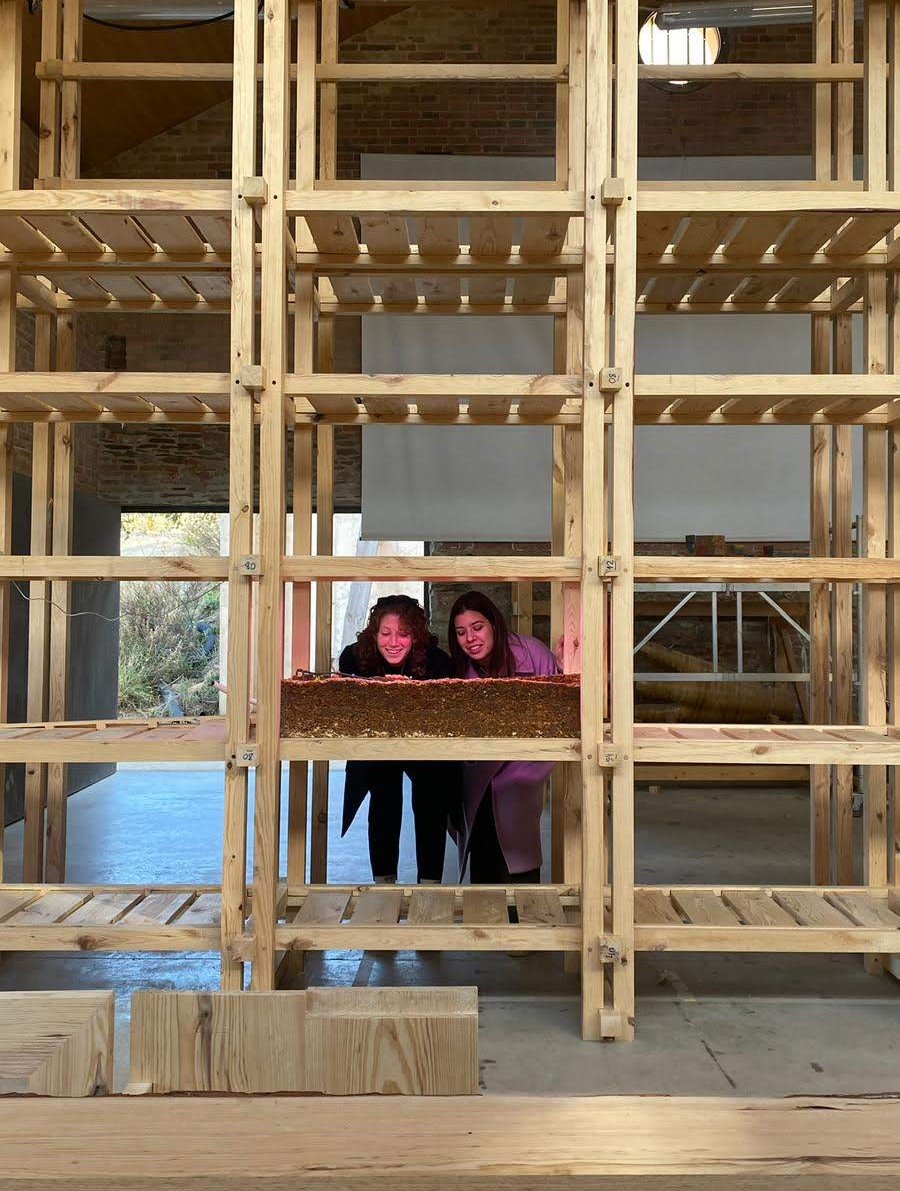The first trimester’s Collaborative Design Studio Project we focused on the conception, design, and execution of a vertical farming system. The system is intended for exhibition at Barcelona’s Ciutadella Park in February 2024, in an exhibition titled MÁQUINA CLIMÁTICA.
Our primary objective has been to create a vertical farming system that harnesses hydroponic techniques utilizing sawdust as the growing medium. This system aims to showcase locally cultivated crops suitable for Catalonian recipes and urban settings. The responsibilities of our team have covered a spectrum of tasks, from thoughtful plant selection and timely cultivation to the intricacies of irrigation, LED lighting, and ensuring the technical aspects vital for plant survival. Additionally, our commitment to using sustainable and local materials led us to craft planting containers using bio-materials(for more information see blog post ‘Plant Container Fabrication | Sawdust Experiment’). Integral to this project is the utilization of sawdust sourced from trees involved in the production of the exhibition‘s wooden furniture, emphasizing a circular approach to resource utilization.
In the pursuit of creating something innovative that pays homage to the historical narrative of Catalonia and the geographical essence of the exhibition, our exploration started with several key subjects: The History of Farming in Barcelona, The Existing Landscape of Urban Farming in Barcelona and Catalonia, and the soilless Vertical Urban Farming Technologies.
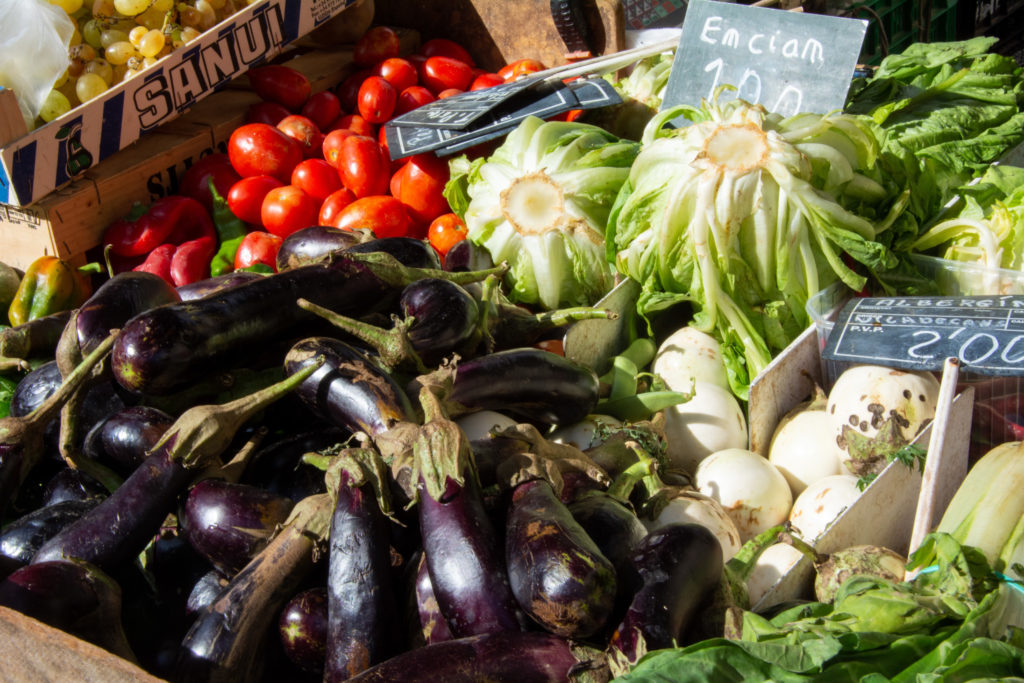
The exhibition’s thematic focus didn’t confine itself to specific crops, providing us with the freedom to employ a diverse set of criteria for the selection process. Among these considerations, one criterion revolved around the uncertainties prevalent within greenhouse conditions. Hence, the emphasis lay on crops resilient to varying environmental factors, particularly favoring those adaptable to colder temperatures, ensuring ease of maintenance and a higher probability of thriving.
Aligning our agricultural narrative with Catalan culture and cuisine formed the bedrock of our plant selection process. The initial harvest plants underwent meticulous curation, drawing inspiration from Catalonia’s winter season traditional cultivations. This deliberate choice echoes the region’s agricultural heritage and intertwines with the fabric of traditional vegetarian dishes, serving as an emblematic representation of its rich cultural and culinary lineage.
In tandem with cultural resonance, the third criterion emphasizes the importance of achieving a balance between colorful and nutritious crops within the plant selection, further enhancing the overall diversity and appeal of the agricultural showcase.

After researching each plant and consulting with our ICTA consultants, we finalized the planting plan. In this plan, we designated two different depths for the planting containers to accommodate a wide variety: 20cm for the smaller plants and leafy greens, and 30cm for the larger plants. Certain plants were selected to provide protection against pests for others. All the plants in the plan are edible.
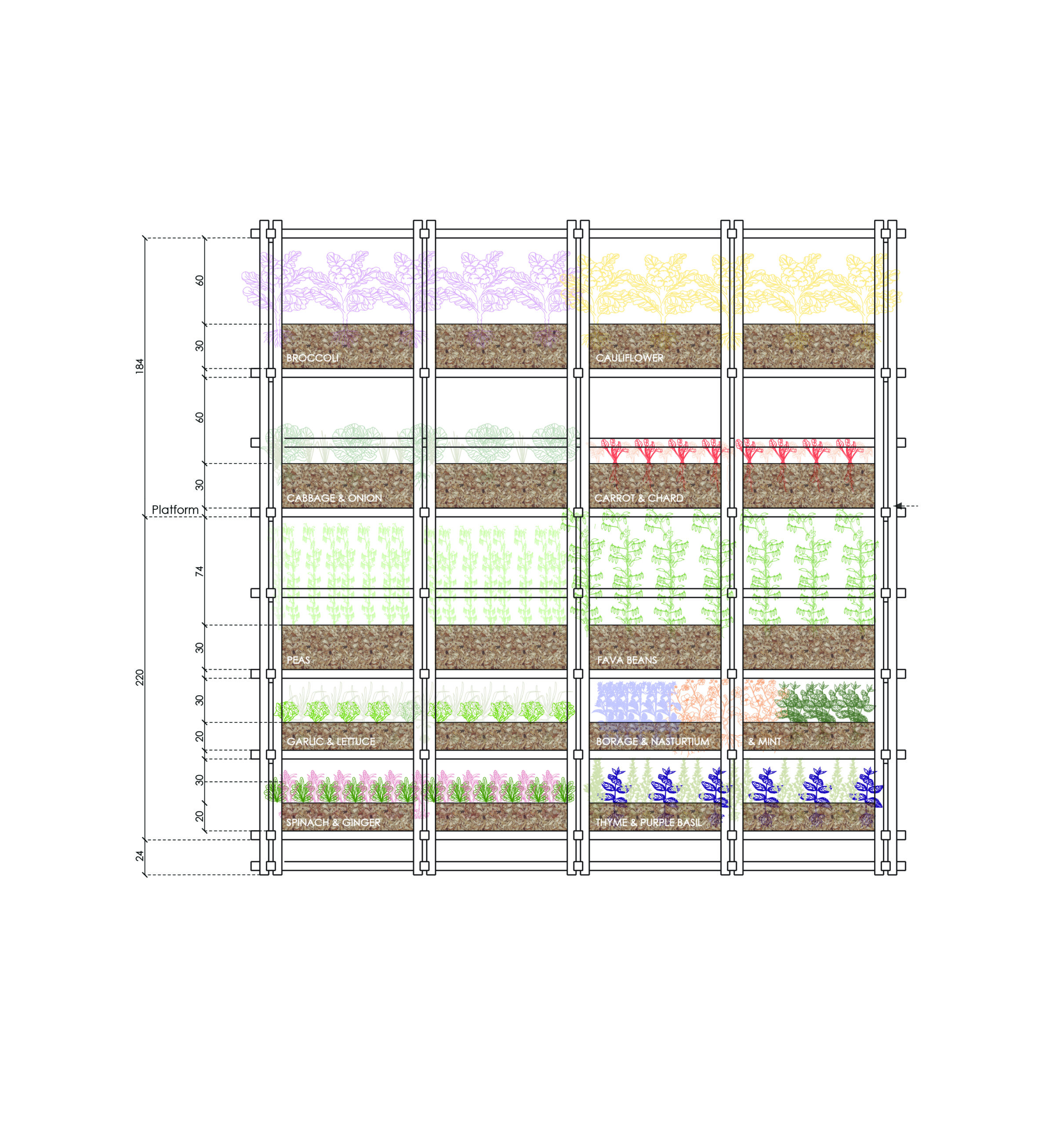
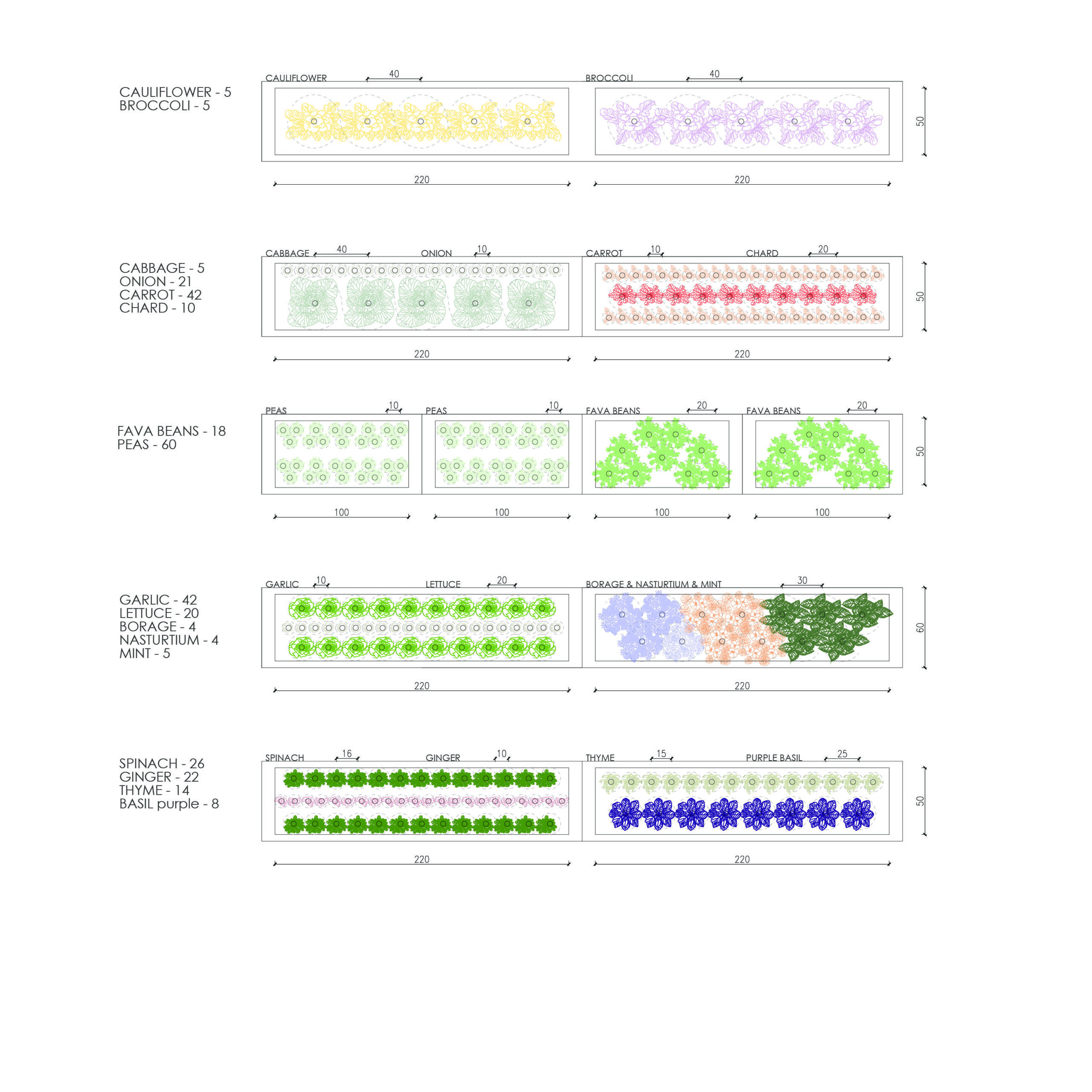
The significance of meticulous plant pairing within vertical farming systems lies in its pivotal role in optimizing resource utilization, maximizing crop yields, and fostering sustainable agricultural practices. The vertical farming paradigm, characterized by stacked cultivation tiers, demands a strategic approach to plant selection and arrangement. This tailored approach not only maximizes the overall yield but also promotes a more resilient and adaptive agricultural ecosystem.
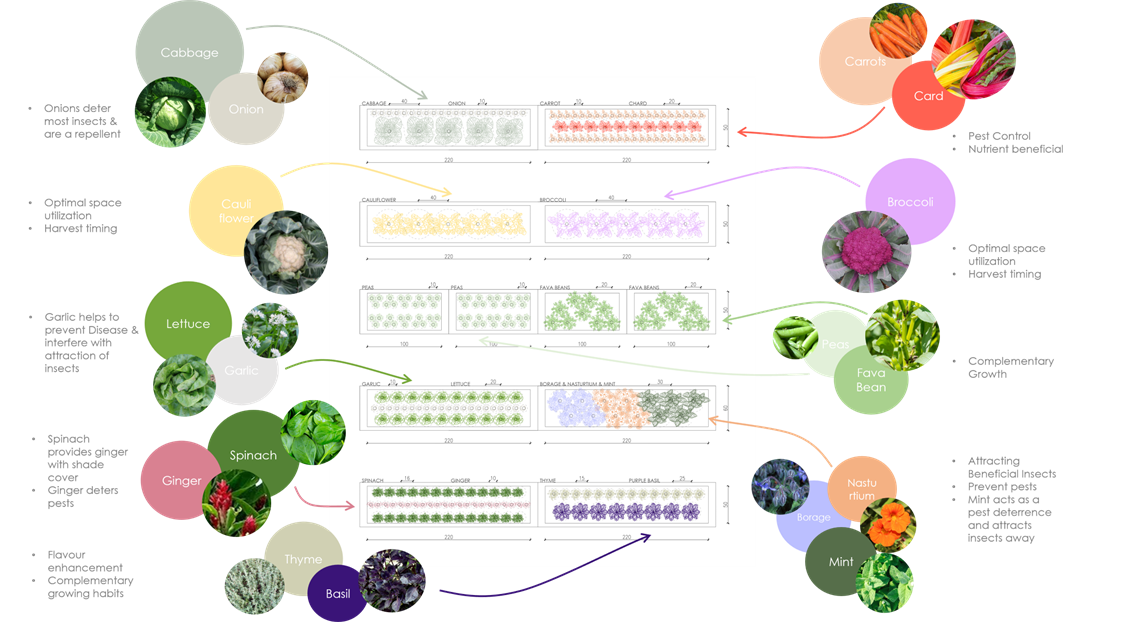
As part of our theoretical research, we delved into the specific requirements and contributions of each plant. We aimed to understand their nutritional needs, pest control attributes, and their potential in enhancing beauty.
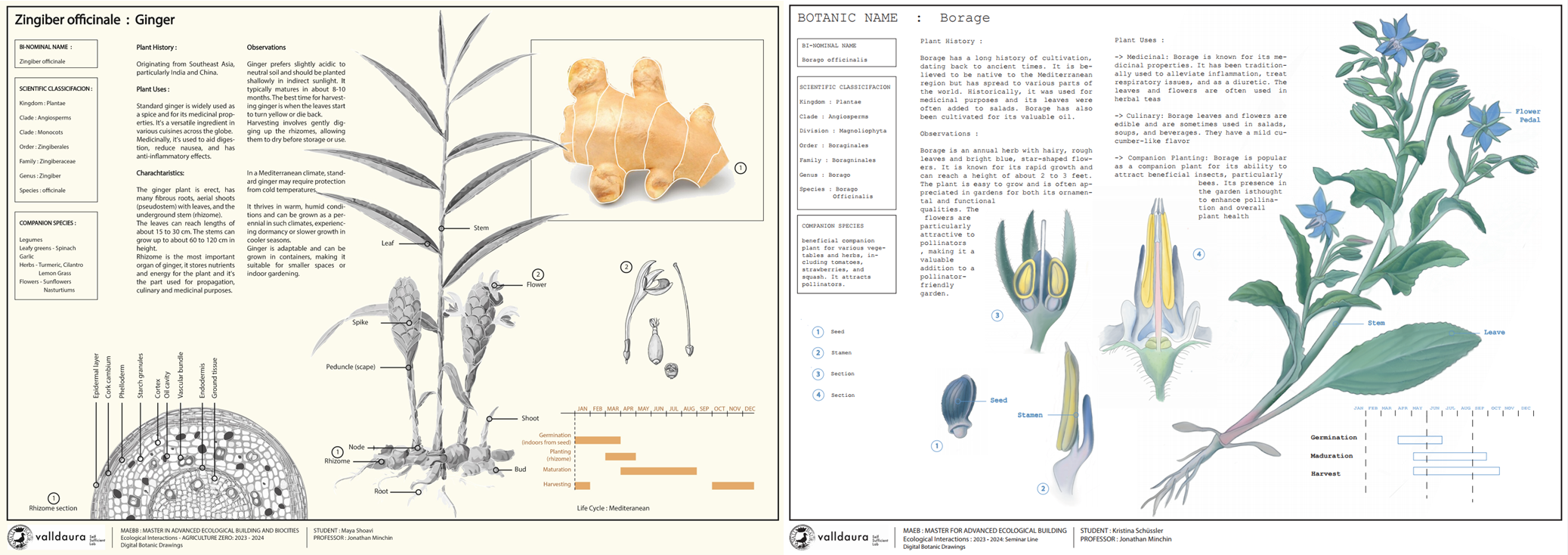
We used the information we gathered to create a collective timeline of germination and maturation.
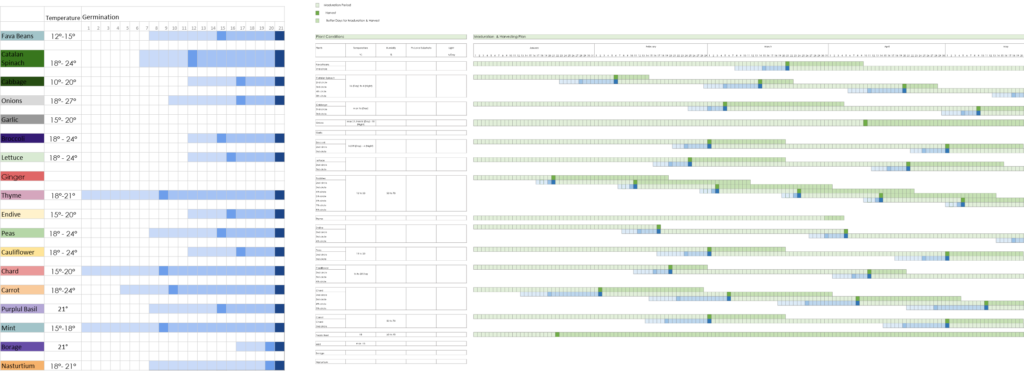
Vertical farming has emerged as a sustainable and innovative solution to tackle the increasing challenges of urban agriculture and food production. An essential element of successful vertical farming is the implementation of efficient water management systems, with drip irrigation and drainage systems playing a pivotal role. These technologies conserve water and optimize nutrient delivery, fostering healthier crop growth in a controlled environment. We have examined two drip irrigation systems and got to the conclusion that the microdrip irrigation system is the best option for this project.
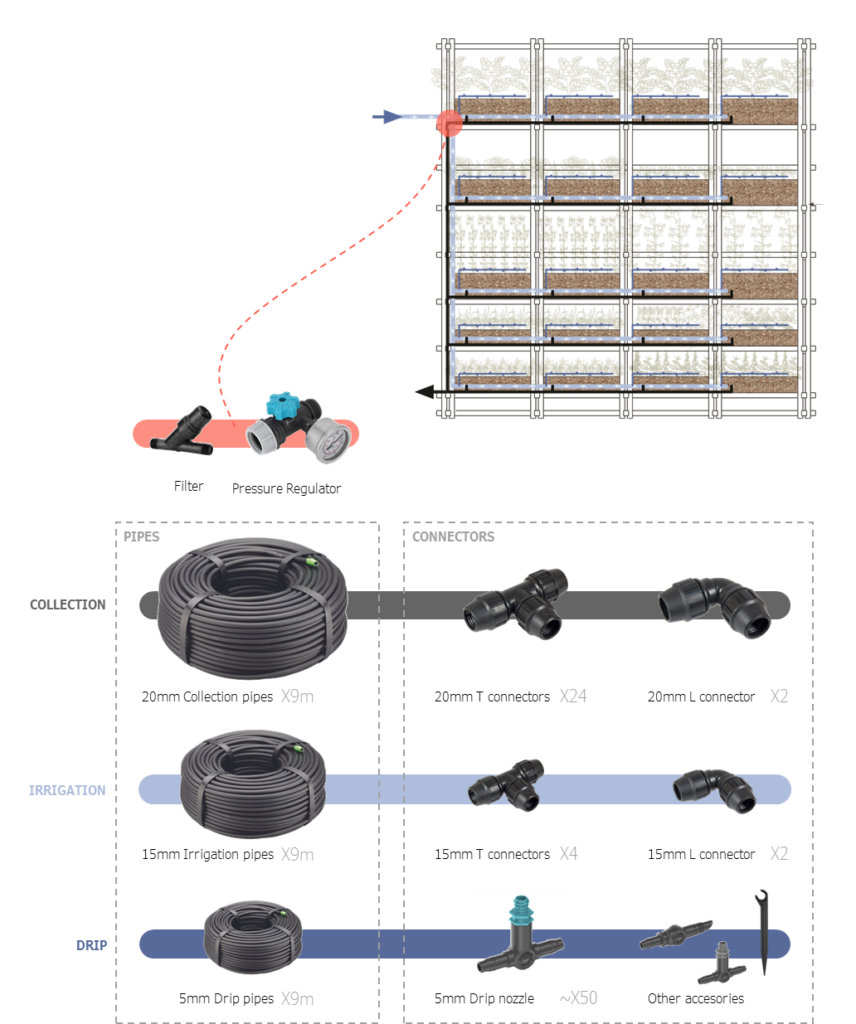
In our exploration we recognized the pivotal role of LED lights in optimizing plant growth. Understanding the significance of proper lighting, we attempted to devise our lighting plan initially. However, we quickly realized the complexity and precision required for this crucial aspect. Acknowledging the need for expertise, we engaged the consultants from Bures Innova. We integrated two distinct types of lighting:
- Pink light – known for its simulation of natural indoor lighting, fostering robust biomass production, especially ideal for leafy greens, herbs, and plants in their early growth stages.
- Cool White light – instrumental in stimulating overall growth, is particularly beneficial for fruiting and flowering plants.
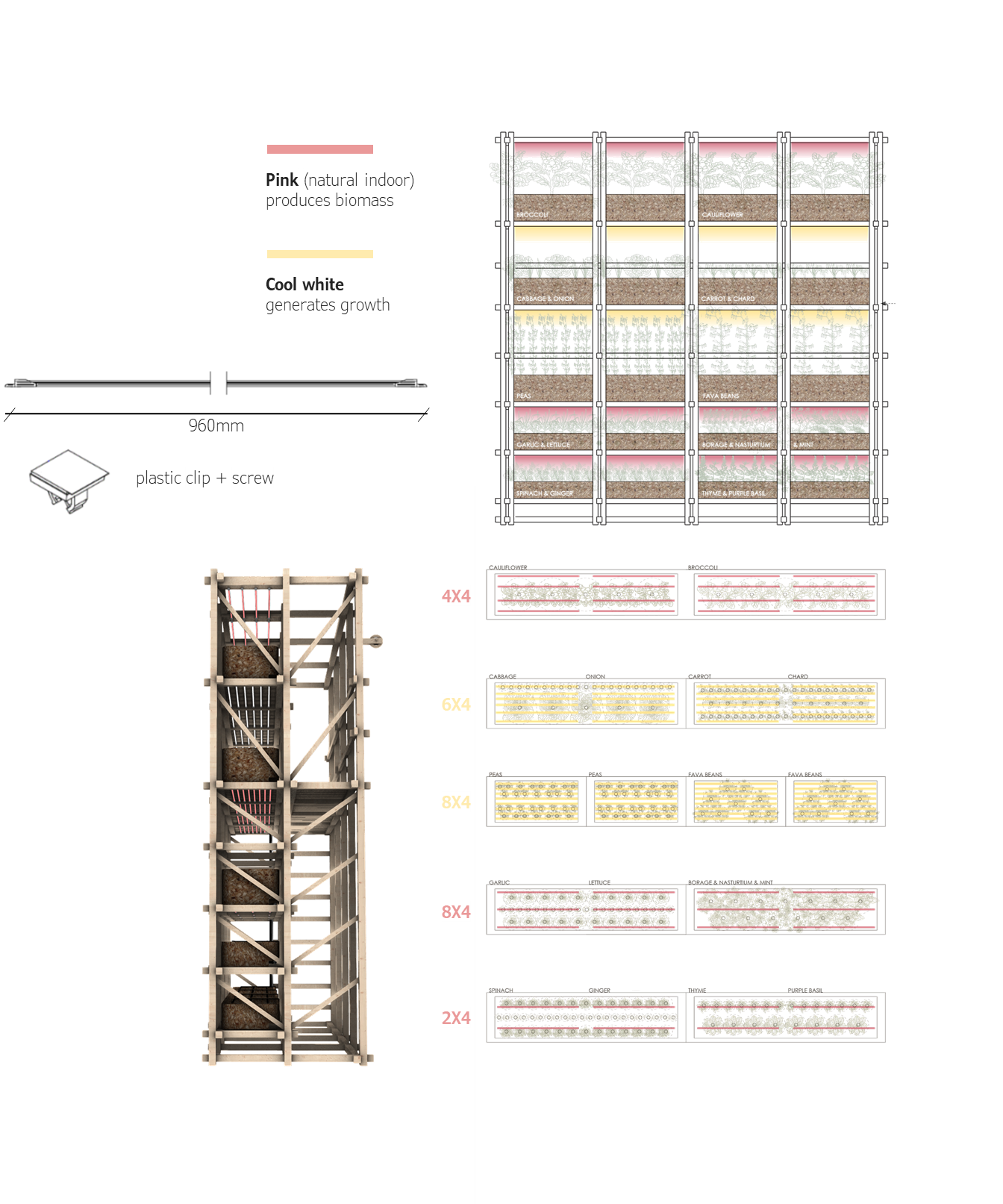
This project has enabled us to delve into various aspects of urban vertical hydroponic farming, covering the entire process from seed to plate using nothing but local materials. While we have more work ahead before the exhibition, the exciting phase of implementing everything we’ve learned begins now. There’s much to be done, and we’re eager to put our knowledge into practice.
